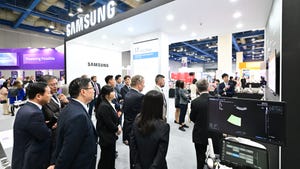LR Live: Wireless Fiber Demand Fuels New Options
Two-thirds of existing cell towers still lack fiber. Alternative access vendors (AAVs) are targeting those sites for growth opportunities
June 26, 2012

NEW YORK -- Backhaul & 4G Core Strategies for Mobile Operators -- The U.S. wireless industry still faces a major challenge in getting fiber to its cell towers and that hurdle is only getting higher as more towers are built to support Long Term Evolution (LTE) rollouts, says Hunter Newby, CEO of Allied Fiber LLC .
Today, only about 30 percent of the 300,000 towers built in the U.S. have fiber, even as wireless service providers plan to build out four to six times as many towers in order to make the best use of their limited spectrum.
"We need to understand the reality of what it is going to cost to build that and where we are going to build it," Newby says.
The Allied Fiber CEO says previous U.S. government efforts to support fiber deployment in rural areas correctly highlighted the broadband problem in those areas but didn't solve it. And he's not convinced that one recent effort, the U.S. Ignite public-private partnership, will get the job done either. A lesser publicized federal initiative, FirstNet, will use public safety as a way of getting around local restrictions on cell sites and fiber and could hold promise, Newby says. (See US Aims for 1-Gig Broadband.)
That demand for fiber is actually driving the business case of multiple alternative access vendors and has prompted one –- Zayo Group Inc. (NYSE: ZAYO) -– to continually expand by acquisition the fiber footprint it owns in Tier 2 and Tier 3 markets.
In many of the more developed markets, wireless operators have contracts in place but will soon be looking for more bandwidth, setting up new competitive opportunities for alternative access vendors (AAVs), says Zayo President David Howson, in a panel here on new backhaul opportunities for AAVs. Many Tier 4 and smaller markets don't have fiber and are ripe for hybrid solutions that combine fiber and microwave, he says.
Howson and Craig Simpson, VP of backhaul sales and development for Conterra Ultra Broadband Holdings Inc. , another AAV, say their companies aren't interested in speculative bids. Simpson says his company won't overbuild another fiber operator but will partner to provide a ubiquitous footprint for a wireless operator.
Both said that today's Ethernet technology enables them to deliver business services over the same fiber infrastructure without compromising what they deliver in terms of mobile backhaul bandwidth.
Because wireless operators have lost out to companies such as Apple Inc. (Nasdaq: AAPL) on the application and device side, they are increasingly differentiating based on network performance, which is pushing the stakes higher for their backhaul vendors to provide higher levels of service assurance, says Patrick Ostiguy, president and CEO of Accedian .
"Performance assurance will be even more important in years to come," Ostiguy says. "Wireless operators also have to address how they plan capacity upgrades."
Capacity demands are also putting pressure on backhaul capacity to be more flexible, and that in turn is driving the push to software-defined networks, says Eric Clelland, VP of North American sales for Cyan Inc. . The flexibility to share available bandwidth depending on time of day and traffic demands will only increase. (See Adding Up the SDN Effect.)
"As bandwidth demands grow, all of a sudden there is going to be price pressure and the competitive ability to be more flexible and to move to a more software-controlled network will be important," agrees Howson. "We are not quite there yet -– it is not being requested or demanded by wireless groups. But we will get on the front foot and offer those to our clients sooner rather than later."
— Carol Wilson, Chief Editor, Events, Light Reading
You May Also Like










